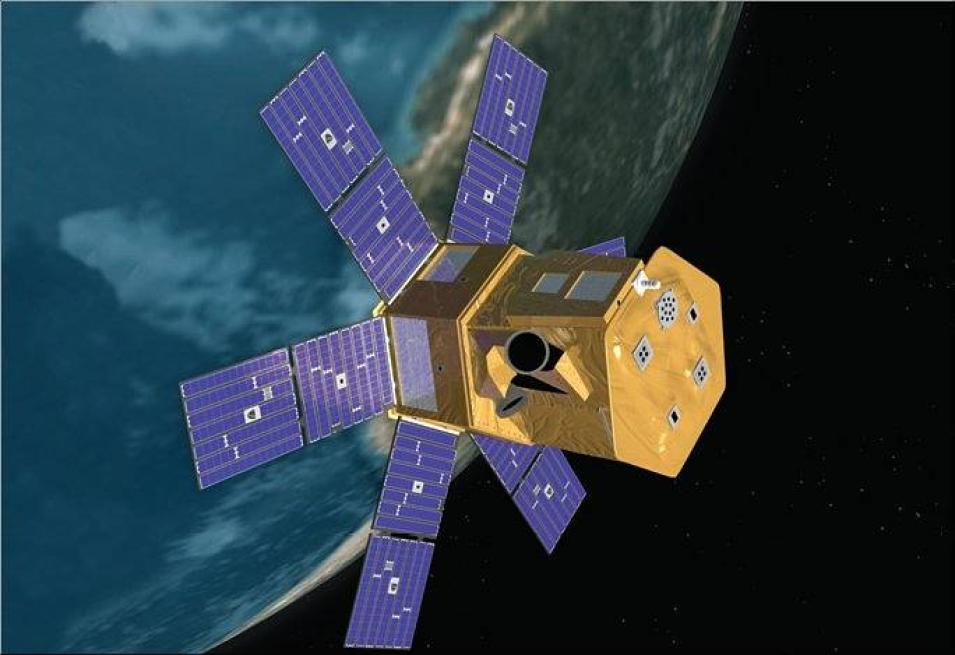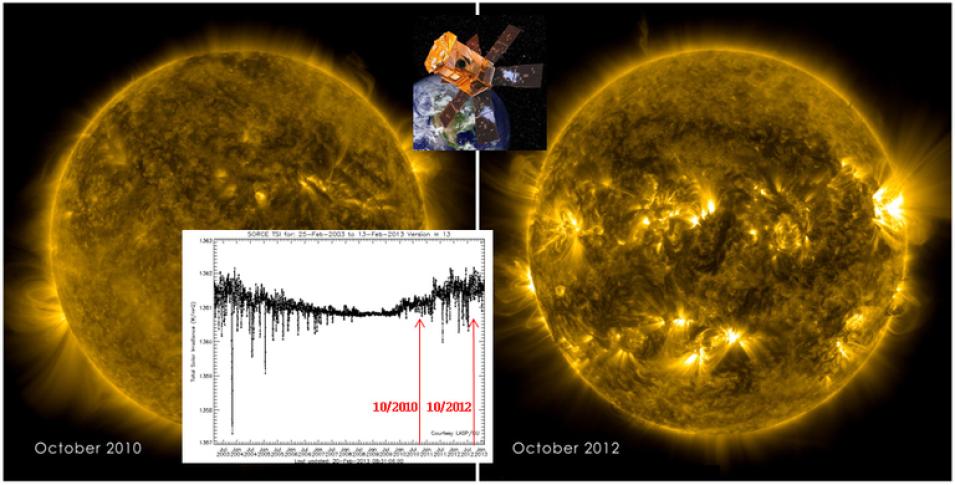After 17 years in orbit, NASA’s Solar Radiation and Climate Experiment (SORCE) mission ended as planned on February 25, 2020. This highly successful NASA Earth Observing System (EOS) mission provided a groundbreaking data record of total solar irradiance (TSI) and spectral solar irradiance (SSI), two key inputs for atmosphere and climate modeling. The mission length also enabled valuable measurements during two of the Sun’s 11-year cycles. SORCE data provide a unique understanding of how the flow of energy from the Sun varies and how these variations impact Earth’s weather, climate systems, and, ultimately, all life on Earth that depends on solar irradiance.
Launched on January 25, 2003, aboard a Pegasus launch vehicle, SORCE was designed as a five-year mission. After completing its nominal mission, NASA Headquarters extended mission operations to maintain data continuity. Eight years into the mission, SORCE battery degradation started to impact operations, and insufficient power was available to support consistent data collection by the time the mission had been in orbit 10 years.
The mission operations team redesigned their operation concept and eventually switched to daytime-only operations in February 2014. This power-saving plan enabled the spacecraft to continue for a full six additional years, allowing sufficient time for NASA to build and launch a replacement instrument to maintain TSI and SSI data continuity.
The spacecraft bus was built by Orbital Sciences Corporation (now known as Northrop Grumman Space Systems) and the spacecraft payload was built by the Laboratory for Atmospheric and Space Physics (LASP) at the University of Colorado. SORCE carried four instruments: the Solar Stellar Irradiance Comparison Experiment (SOLSTICE), the Spectral Irradiance Monitor (SIM), the Total Irradiance Monitor (TIM), and the X-ray ultraviolet Photometer System (XPS). The SORCE spacecraft and instruments were operated by LASP, which also was responsible for the acquisition, management, processing, and distribution of the science data.

